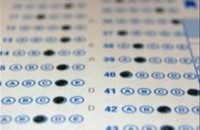
Obama and Romney Part Ways on Vouchers
Education policy — what Romney and Obama agree and disagree on.
This post is also available in: Spanish
In a move with implications for education policy throughout the Americas, some 26,000 teachers and staff in the United States’ “Windy City,” Chicago, began a strike yesterday to protest Mayor Rahm Emanuel’s proposals for teacher policy reform.
Chicago Public Schools (CPS) and the Chicago Teachers Union (CTU) differ over issues prominent throughout the Americas – teacher pay, job security, and calls for teacher evaluations to be based in part on student performance.
The proposals of Mayor (and former White House Chief of Staff) Emanuel are closely aligned with President Obama’s and Secretary of Education (and former CPS Chief Executive Officer) Arne Duncan’s calls for greater teacher accountability throughout the country. Whether intentionally or not, the strike represents a sharp counter-attack to the administration’s alignment with traditionally Republican education policies and the growing national trend toward basing teacher pay in part on student test scores.
Since taking office last summer, Emanuel has ruffled teachers’ feathers by adding 90 minutes to the city’s six-hour school day and cancelling a 4 percent salary increase. In current negotiations, CPS has offered to raise teacher salaries by 3 percent this year, and an additional 2 percent annually for the following three years. But the CTU remains concerned about issues related to teachers’ benefits, including the rising costs of healthcare, and hope to maintain raises based on teacher experience. Also at stake is job security, as the CTU seeks a promise that teachers laid off during possible closures of low-performing schools receive hiring priority when new positions become available.
From a national perspective, Chicago’s teachers have little to complain about. On average, they make $76,000 per year in a district where the majority of students’ families live near the poverty line of $27,214 annual income for a family of three. The average teacher salary for the US as a whole is $54,819.
Outside of concerns related to salaries and job security, the hottest area of contention is Emanuel’s proposal that teacher evaluations be based in part on student performance on standardized tests, a measurement known as “value-added.” Other major cities, including New York and Washington, have already implemented such measures with positive results – DC’s math and reading scores increased by 18.1 and 9.5 percentage points, respectively, between when reforms began in 2007 and 2012.
The Obama administration has made teacher merit pay a key component of its national “Race to the Top” program, which provides incentives for the adoption of innovative education policies. In his State of the Union Address in January, he stated: “Teachers matter. So instead of bashing them, or defending the status quo, let’s offer schools a deal. Give them the resources to keep good teachers on the job, and reward the best ones. And in return, grant schools flexibility…to replace teachers who just aren’t helping kids learn.”
Given the prominence of the debate in Chicago, a victory by the CTU could slow the momentum of the Obama administration’s education proposals. On the other hand, the image of a Democratic president’s former right-hand man standing up to labor interests could spell trouble for teachers unions across the country whose concerns echo those of the CTU.
Unions bristle at the idea of teachers being fired or rewarded based on student test scores, which opponents of merit pay point out are affected by more than just teacher quality. In CTU Coordinator John Kugler’s words, teachers “have no control over those scores.”
In July, the school system returned $34 million in funding from the Obama administration that had been targeted toward the development of a merit pay program because it could not secure CTU support. And CTU president Karen Lewis has worried publicly that the current accountability proposal could result in the firing of 30 percent of the district’s teachers. In comparison, the District of Colombia fired 5 percent of low-performing teachers in the 2010-2011 school year based on its IMPACT merit pay program.
While value-added measures aren’t perfect, relieving teachers of the burden of responsibility for classroom learning is simply bad for students. Researchers from Columbia and Harvard Universities found that students whose teachers have higher value-added scores are more likely to attend college and less likely to become pregnant as teenagers.
They also estimate that a class of students with an average teacher will earn a total of $250,000 more than a class taught by a teacher who ranks in the lowest 5 percent based on value-added measures. As noted by co-author John N. Friedman, such differences add up: “If you leave a low value-added teacher in your school for 10 years, rather than replacing him with an average teacher, you are hypothetically talking about $2.5 million in lost income.”
Retaining low-performing teachers and not rewarding the highest performers prevents education systems from competing with the world’s best. And such practices are not unique to Chicago, or even to the US, as a recent article by former Nicaraguan Minister of Education Humberto Belli points out.
For the sake of the 350,000 Chicago students currently without teachers, one hopes that the CPS and the CTU reach an agreement soon. A recent study of teacher strikes in Ontario showed that fifth-grade students whose teachers went on strike scored 3.8 percentage points lower than their peers on standardized exams – a statistic that bodes ill for Chicago, and even more so for Latin America, where teacher strikes occur with remarkable regularity.
But even in the face of missed school days, the CPS is right to hold firm on management and accountability reforms that are drastically needed to improve student learning. Perhaps the Windy City is the perfect place for education reform to gain its second wind.
Additional News and Opinions on the Chicago Teacher Strike:
Education policy — what Romney and Obama agree and disagree on.
Wall Street Journal article discusses new teacher evaluation methods and how the results will be used for incentives.
Article recounting conflict between teachers union and D.C. government over possible dismissal of teachers deemed “ineffective”.

